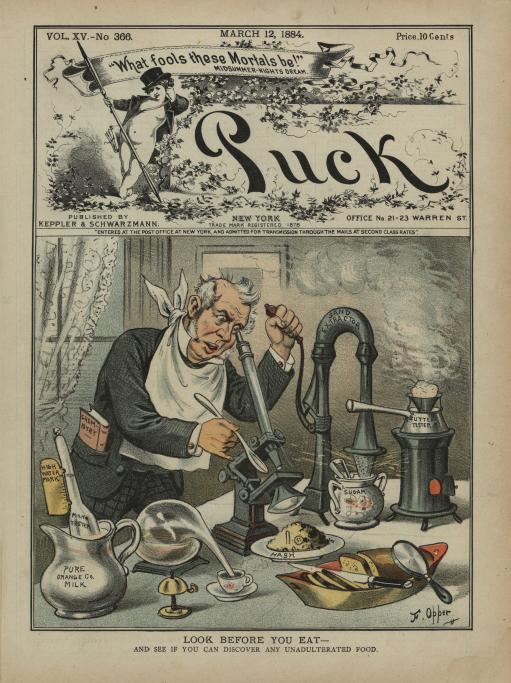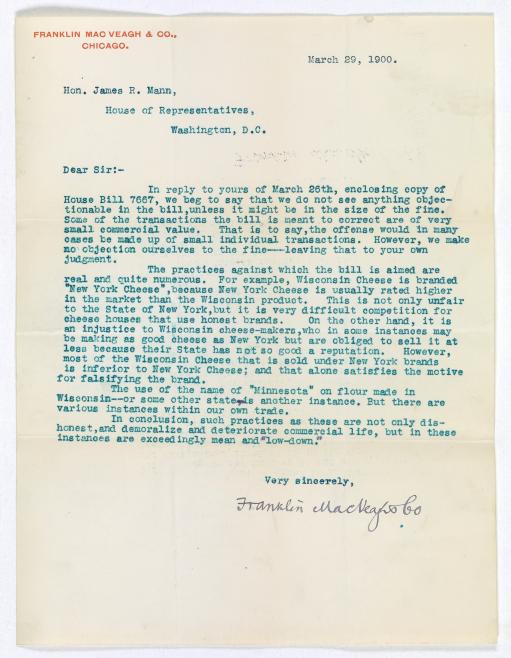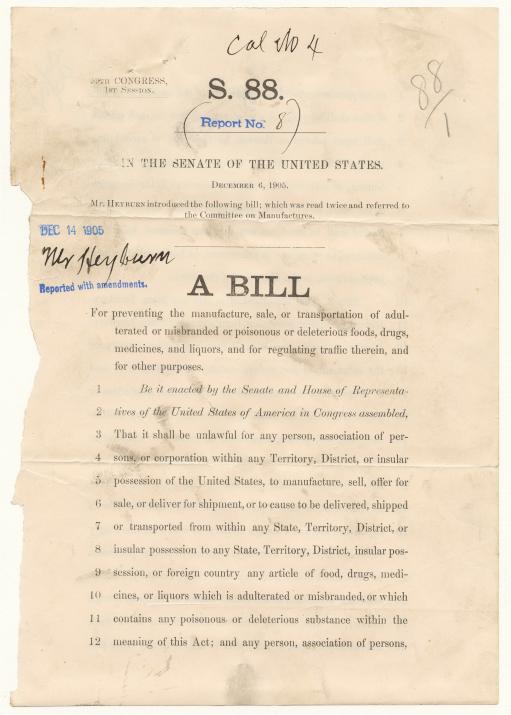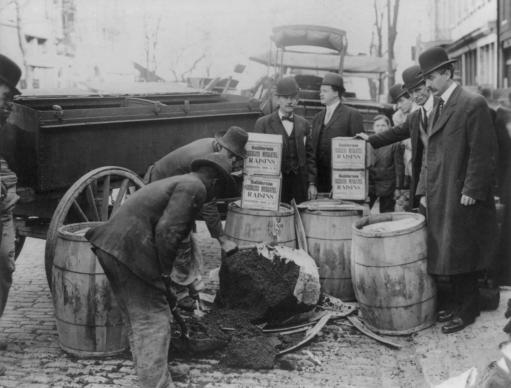
Although Congress began investigating drug purity in the 1840s, it was during the Progressive Era that it approved the first federal regulations protecting consumers’ health and safety. When Upton Sinclair’s 1906 novel The Jungle revealed food adulteration and unsanitary practices in meat production, public outrage prompted Congress to establish federal responsibility for public health and welfare. The Pure Food and Drug Act of 1906 prohibited the sale of misbranded or adulterated food and drugs in interstate commerce and laid a foundation for the nation’s first consumer protection agency, the Food and Drug Administration (FDA).
I have here . . . a number of adulterated articles. Here is a bottle of cherries, originally picked green, in order that they might be firm, with the green color all taken out with acid until they were perfectly white, and then colored with an aniline dye which is poisonous in any quantity.
Representative James Mann of Illinois, Speech to the U.S. House of Representatives, June 21, 1906



S. 88, A Bill for preventing the manufacture, sale, or transportation of . . . deleterious foods, drugs, medicines, and liquors . . . , December 14, 1905

U.S. Marshal destroying worm-infested currants and raisins seized in Washington, D.C., bakeries, photograph, November 20, 1909